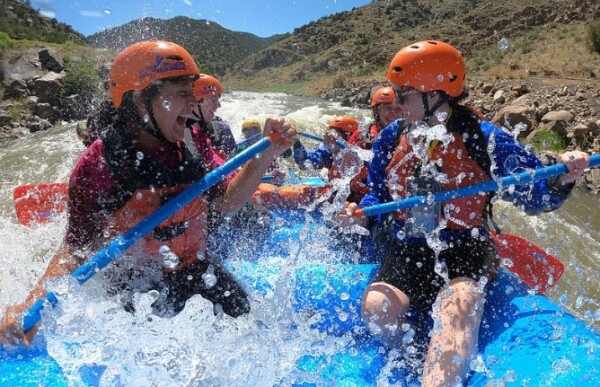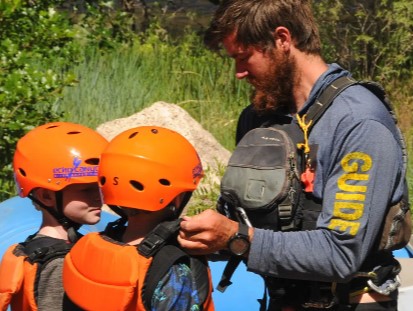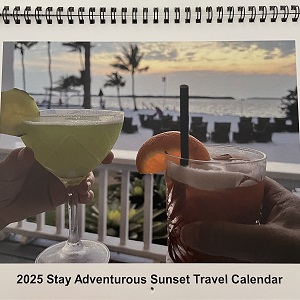Craving a splash of adventure? Why not try white water rafting? It’s not just for thrill-seeking pros anymore; everyone’s invited to the party. Remember, safety first—follow the rules to keep the good times rolling. Whether you’re young or young at heart, gear up for some safe splashes and make memories to last a lifetime. No shortcuts here, just pure, exhilarating fun. In this guide, we’ll go over all you need to know about Colorado white water rafting from safety and gear to what you can expect on your first trip. Now, let’s dive in!
 Partnering with Your Guide
Partnering with Your Guide
It is essential to trust your whitewater rafting experience with skilled veterans. Listen carefully to everything they tell you and follow their instructions to the letter. If you do all of this, then there will be nothing to worry about during your adventure. It will be an amazing time that you won’t forget!
Absorbing Safety Protocol
Before starting your white water trip, listen carefully to the safety rules given by your guide. Learn what to do in different situations, and ask questions about anything you’re not sure about. It’s important to do this before going on the river so that everyone can be safe while having fun.
Selecting a Licensed Outfitter
When it comes to Colorado whitewater rafting, select a licensed and well-respected rafting company. You can do this by checking how long they have been in business and if their guides have had the right training. This will show you if they are actually good at what they do and know how to keep you safe while still having fun. When you go with a certified outfitter, you can trust that they follow strict safety rules all the time without fail during your trip on the water.
Prioritizing Personal Safety Gear
Make sure you are well equipped with safety gear like a personal flotation device or life jacket that fits well. Dress warmly & tightly fasten all buckles to keep everything in place while on the river. To avoid any accidents, hold onto the paddle’s T-grip tightly so it doesn’t hurt you or others if you let go. When rafting in Colorado, wear clothes that will keep you warm even when they get wet. This means synthetics like fleece or polypropylene — not cotton! These materials dry faster and help insulate your body heat.
Mastering Paddle Techniques
In the course of whitewater rafting in Colorado, it is important that correct paddle handling techniques are applied for safety & efficiency purposes. To reduce the chances of getting hurt, one has to hold onto the shaft using one hand and have the other hand on top of it (also known as T-grip). If done properly, this will mean fewer accidents while still making it easier to steer through rough waters.
Staying In the Boat
Be watchful to stay inside the raft’s edges, carefully obeying what guides say while we’re going through rough water. If we hit something or don’t balance well, we need to lean towards the middle & hold onto our paddles tightly so that we don’t fall out on accident. It’s important to stay calm in all situations like this one: if everyone does their part, then we can make sure that we’re safe.
Familiarizing Yourself with Swimming Techniques
Learn basic swimming methods which are important for your safety in water. Understand how to go with the flow (downriver swimming) & use strokes that don’t make big splashes (controlled strokes). Know what to do if something goes wrong while you’re swimming — like how to keep away from a whirlpool or get out of the water quickly. If you’re not sure about standing in a river because the current might pull you down (a problem called foot entrapment), it’s best not to stand there. Try your hardest to swim to the shore instead
Comprehending High-Siding Commands
Understand how important it is for everyone on the raft to paddle hard (“high-side command”) when there are difficulties or dangers (“precarious situations”). Learn what to do if weight needs to be shifted so that the raft does not tip over (this is called ‘redistributing weight’). Being ready & paying attention while white water rafting in Colorado lowers the chances of something bad happening.
This will also help you feel sure about what you need to do if anything unusual happens.
Preparing for Whitewater Paddling
Securing the best place in the boat is very important for people who are new to paddling in rivers with rapids (which is called “whitewater” kayaking). When a lot of people go on a trip, they will sit all around the edges of a raft. There are also places inside where you can put your feet (called foot braces) or sit down without falling out (called thwarts) which are used for pushing into while paddling – having your feet in these positions helps you paddle more powerfully.
It is essential that you maintain stability in fast-moving sections by finding the right balance between how you sit on the seat, where you keep your feet, and what kind of strokes you use with your paddle.
Embracing the Moment
Experience the awe-inspiring views & exciting rush of Colorado whitewater rafting by giving up things that take away your attention. This means also putting away cell phones since they can’t typically get soaked and you don;t want to lose it on the water. You can fully enjoy & understand how unique this adventure is by having professionals take pictures of you while you are doing it. Save your pohotography skills for taking images of the Colorado sunset afterwards.
Conclusion
If you follow these basic guidelines & listen carefully to your instructor as you go on a white water rafting trip in Colorado, you will be able to have an enjoyable experience while appreciating the loveliness of the surroundings, feeling enthusiastic about how powerful & energetic the water is as well as being thankful for all the fun times you had which will not easily be forgotten.

















